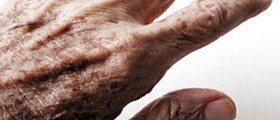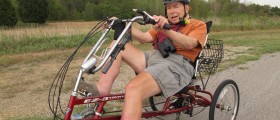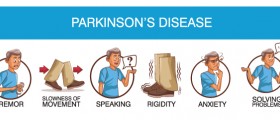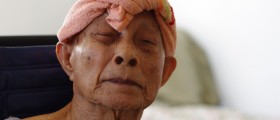Parkinson's disease is a progressive brain disorder which typically features with tremor, difficulty walking and problems with movement and coordination. The condition is incurable and chronic. However, there are different medications that may alleviate the symptoms and signs of Parkinson's disease and patients additionally benefit from physical as well as occupational therapy.
Parkinson's Disease Overview
There are numerous symptoms and signs of Parkinson's disease and they are not unique for all patients. Initially one side of the body is affected but as the disease progresses the symptoms and signs spread to both sides.
Parkinson's disease typically features with tremor. Tremor in the beginning affects the hands and then other parts of the body. Bradykinesia (slow movement) is another characteristic of Parkinson's disease. Patient's steps become short and shuffling and the feet may freeze to the floor. Muscle rigidity, impaired posture and balance, speech changes, dementia as well as loss of automatic movements are several more characteristics of the disorder.
The actual cause of Parkinson's disease remains mystery. Still, it is confirmed that certain factors may contribute to the disorder. They include changes in genes, some environmental triggers etc. Patients suffering from Parkinson's disease lack dopamine, one of brain's neurotransmitters, and there is also low level of epinephrine.
Therapy for Parkinson's Disease
Medications together with physical therapy and changes in one's diet are treatment options for people suffering from Parkinson's disease.
Medicament treatment may help with problems such as walking difficulty, movement and tremor. Such drugs increase the level of dopamine in the brain. Initially the response is spectacular but with the progression of the disease the effects of drugs diminish. The symptoms can, however, remain well-controlled. Some of the drugs prescribed to patients suffering from Parkinson's disease include levodopa, dopamine agonist, MAO inhibitors and catechol O-methyltransferaze (COMT) inhibitors. Some patients may also benefit from anticholinergics and glutamate (NMDA) blocking drugs.
Physical therapy is essential part of treatment for Parkinson's disease. It can improve the mobility and the range of motion, gait and balance. Muscle tone improves as well. Exercises cannot stop progression of Parkinson's disease but by maintaining muscle strength patients may remain confident and some degree of capability. Patients with speech and swallowing difficulties should work with a speech therapist. Occupational therapists help patients stay active and improve the skills by performing certain tasks. These professionals are also helpful in making changes in patient's home or working place which can only promote patient's independence.
Surgery used to treat Parkinson's disease is called deep brain stimulation. During the procedure a surgeon implants electrodes deep inside certain parts of the brain. These electrodes control movement and a pacemaker-like device implanted under the skin of the chest acts as their stimulator. This surgery is recommended for people with advanced disease who do not response to medicament treatment.

















Your thoughts on this
Loading...